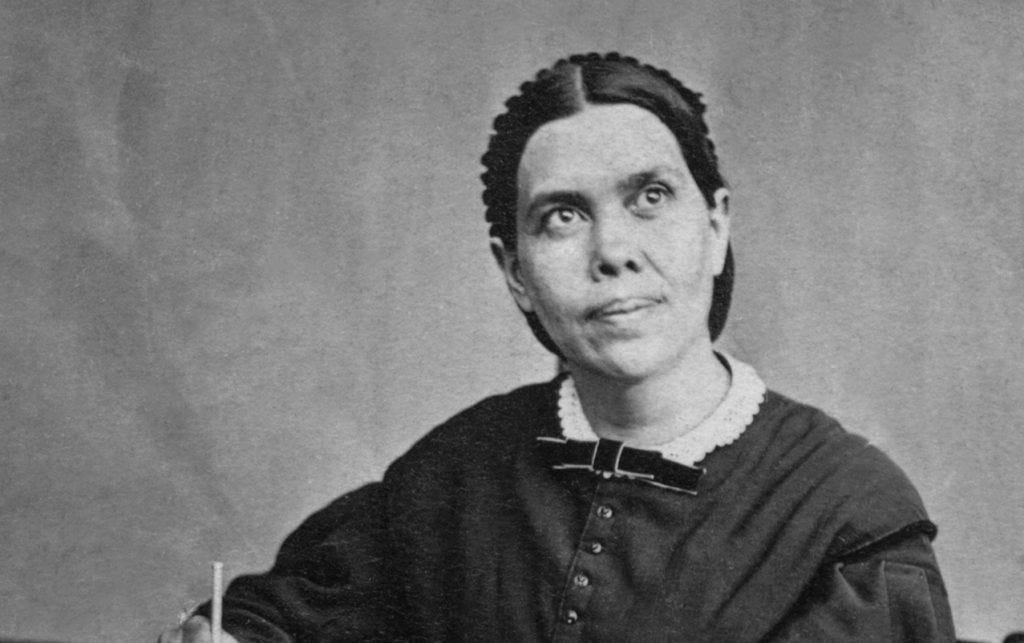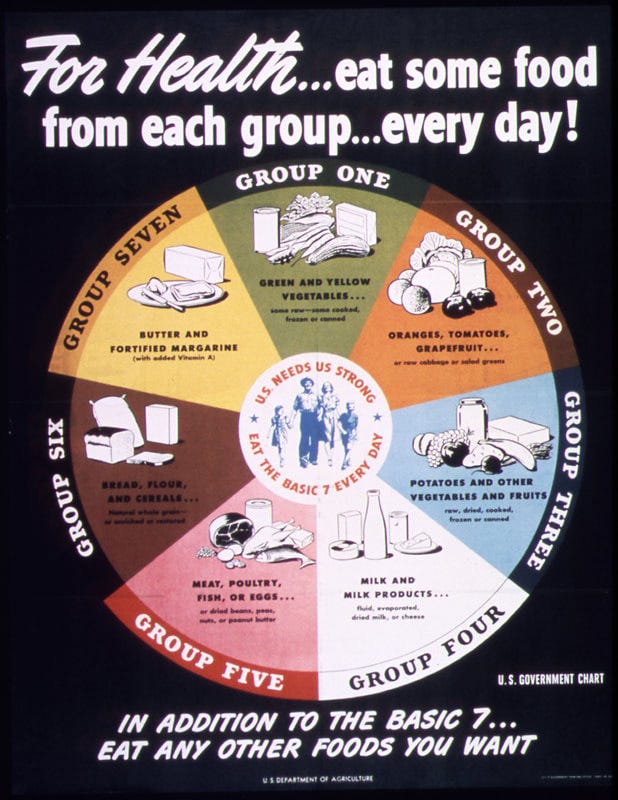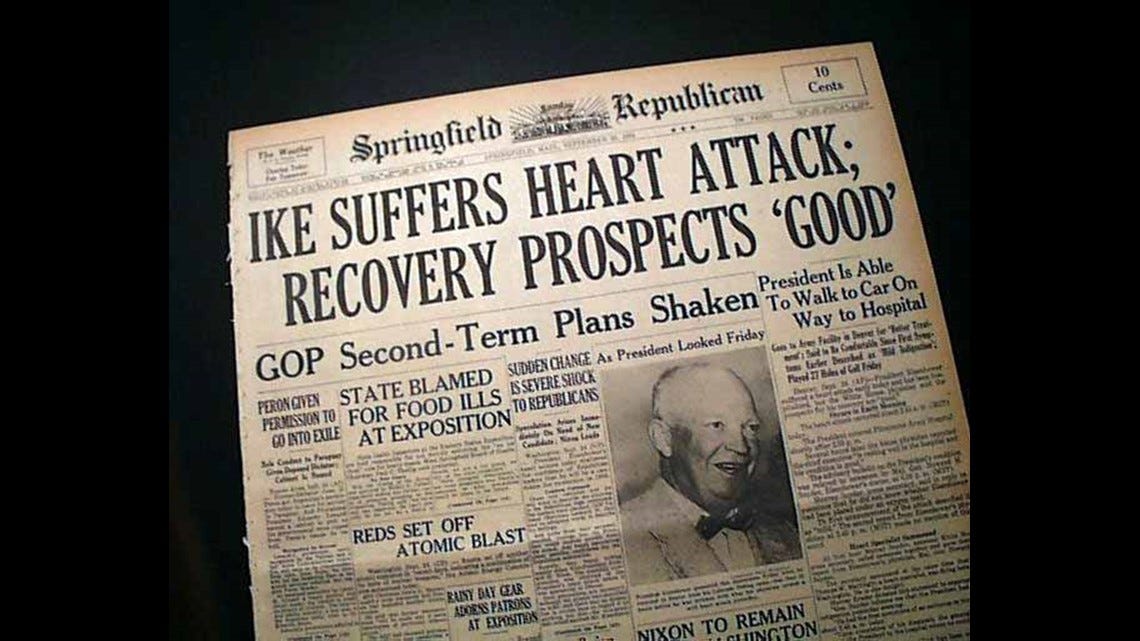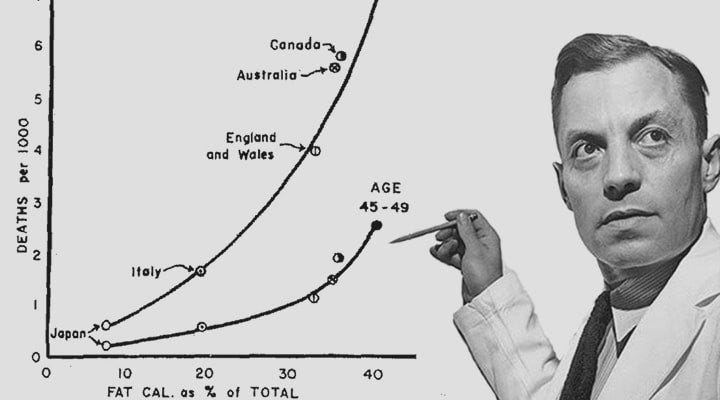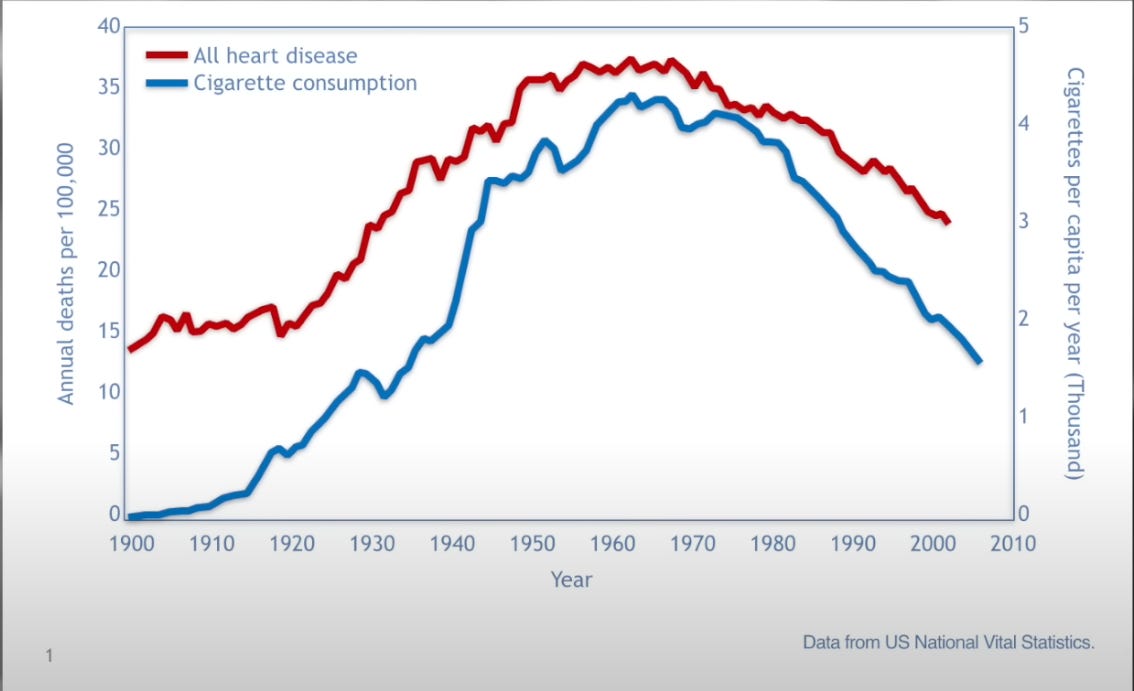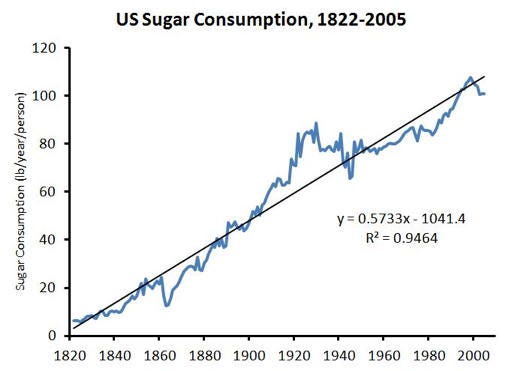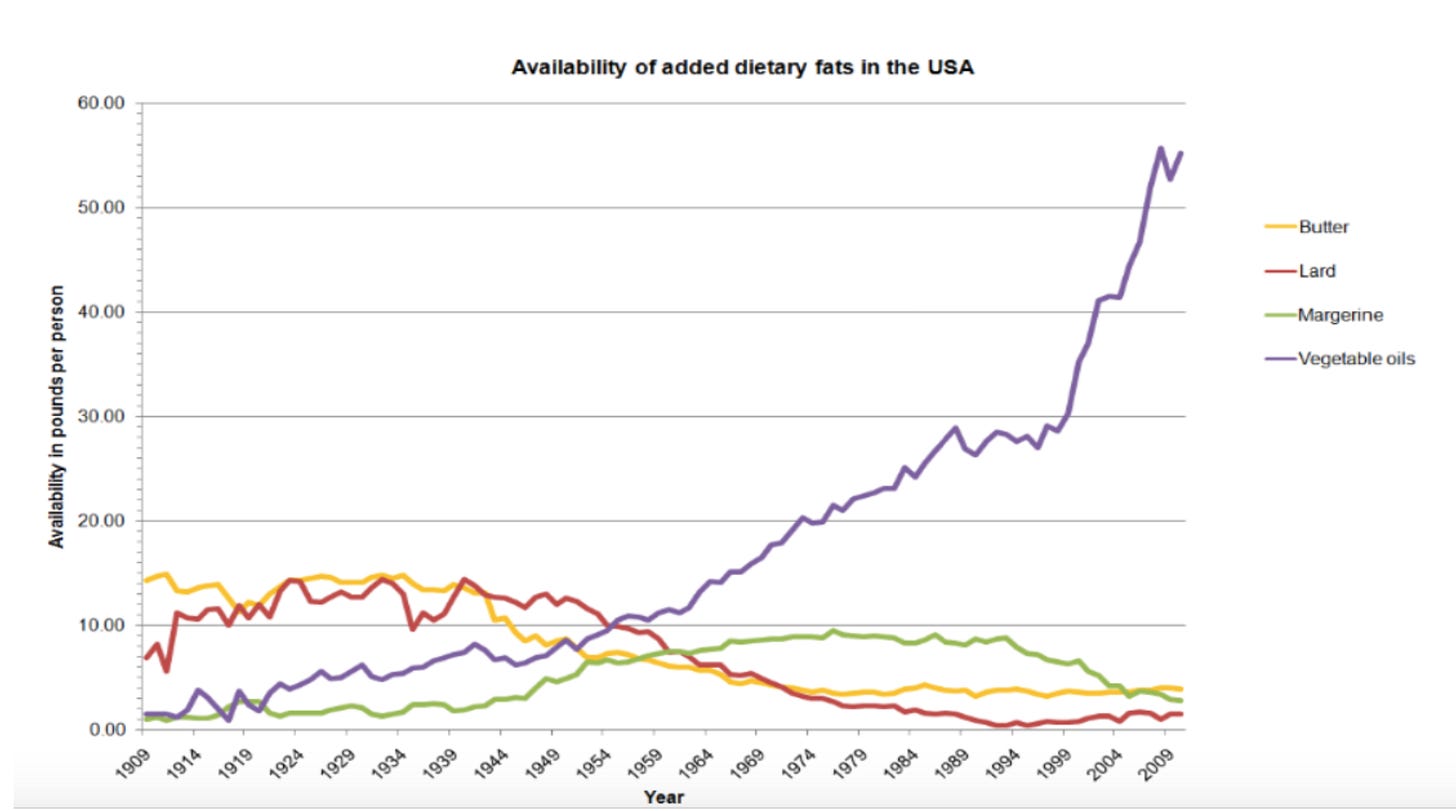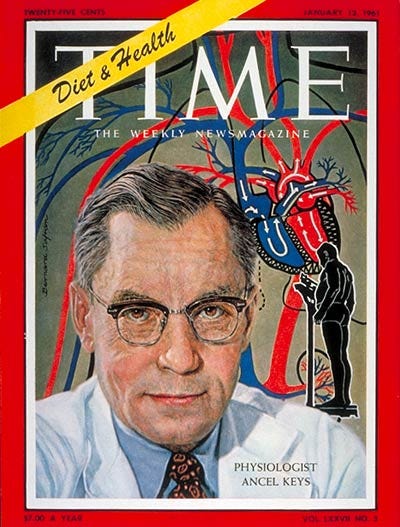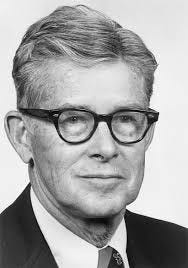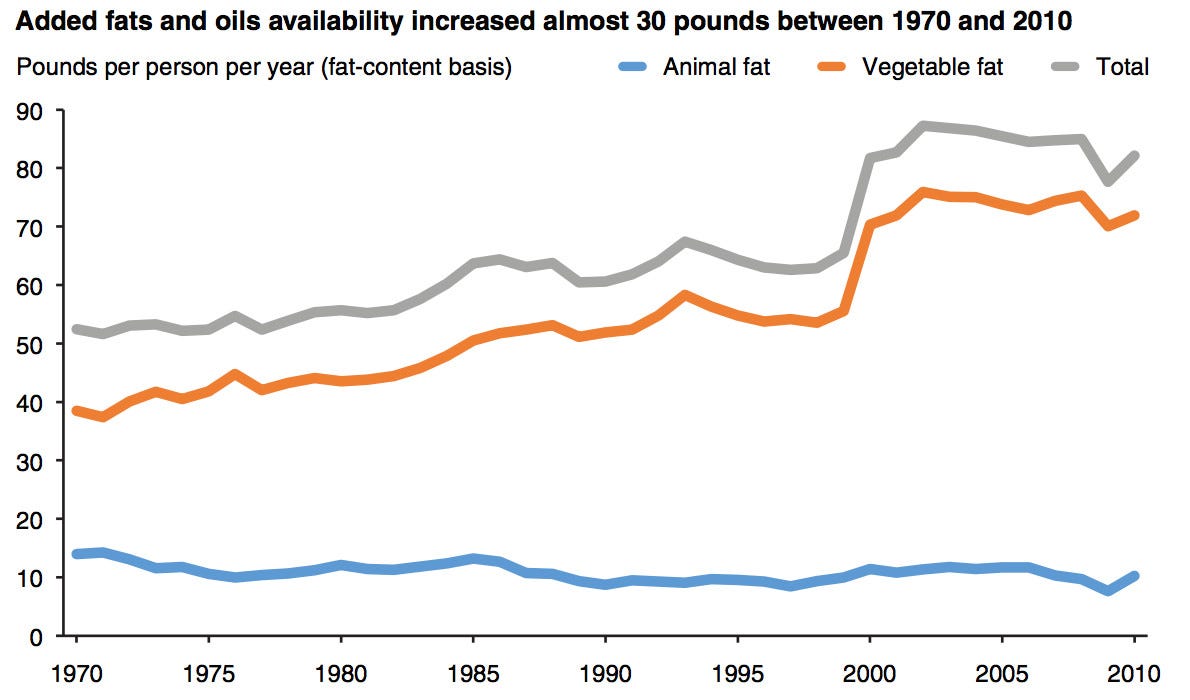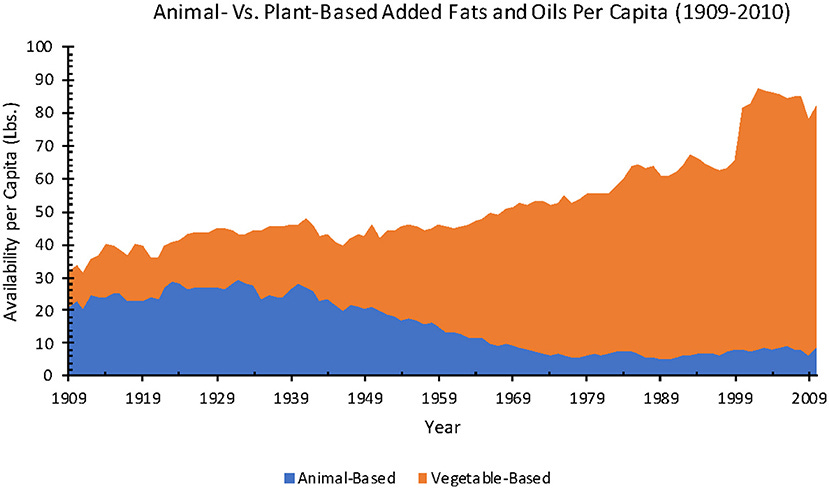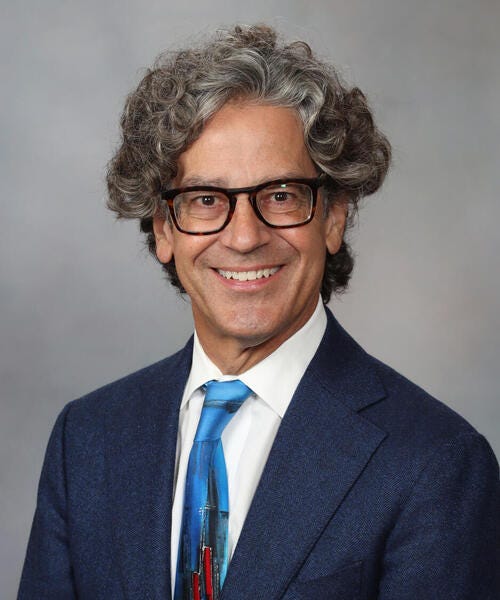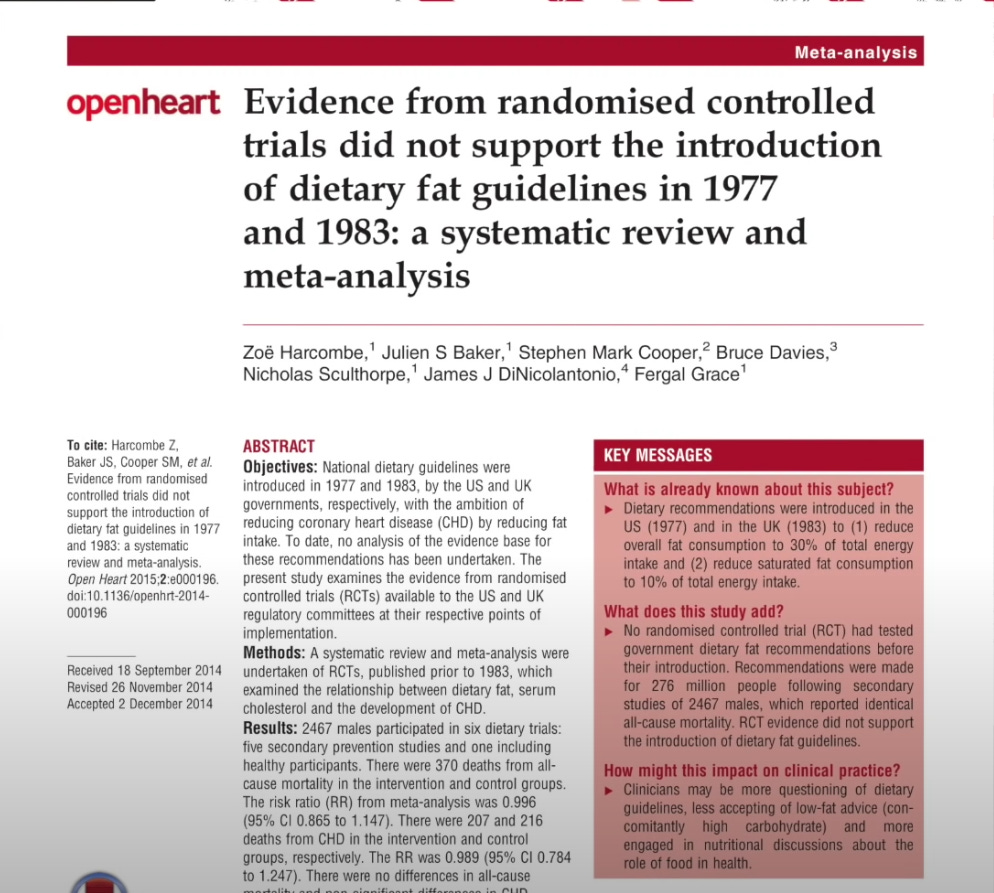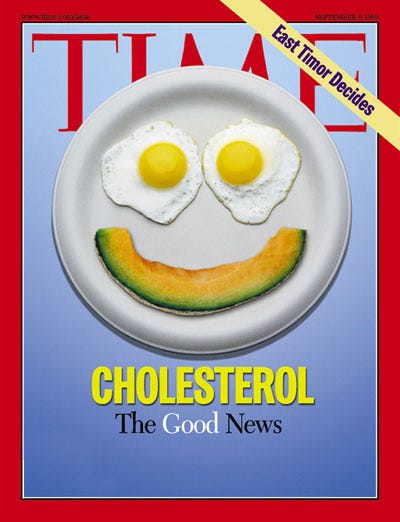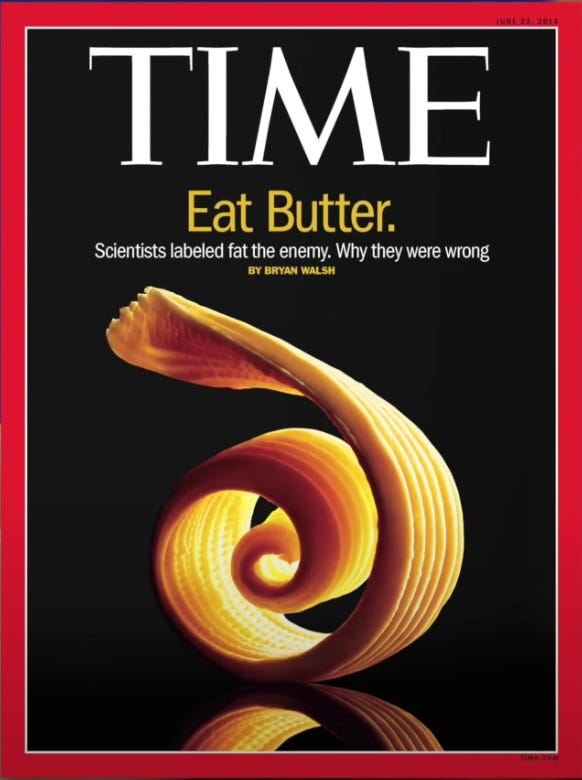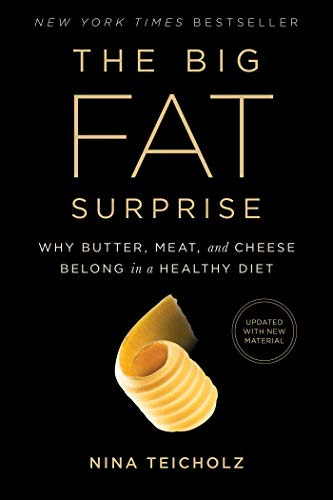The shady Story behind why we think Veganism is healthy
Paid off scientists, swayed politicians, and hidden studies helped us be afraid of meat
*The article is really long so you may prefer the voiceover (43 mins). You should be able to access it from your computer or the Substack app. With the phone app, you can have the voiceover playing in the background.
How we arrived at the common belief that going vegan or “plant-based” is going to be better for health is a long story. It started out with an epileptic patient suddenly declaring a vegetarian diet is the healthiest because that’s what’s eaten in the Garden of Eden. Then, a young boy was taken under this epileptic woman’s wing became the medical director of a famous health center. Eventually, the United States dietary guidelines would be formed under the influence of the church of the epileptic woman. Paid off scientists, hidden studies and plenty of shoddy studies, as well as the influence of processed food companies all contribute to the plot of this vegan story.
To start to understand the story that set the stage for people to assume vegan diets are the healthiest, we need to take a look at the Seventh Day Adventist church. They are arguably the origin of the idea that vegetarian or vegan diets are “good” for us. The SDA church has 20.3 million members (as of 2017) and has established “hundreds of hospitals, colleges, and secondary schools and tens of thousands of churches around the world, all promoting a vegetarian diet.” In fact, there are 8,515 (as of 2016) educational institutions managed by SDA with 1.95 million students, making it the second largest integrated network of schools in the world.
There is no doubt that these institutions have an influence on the lifestyle, including diet, of the millions of patients who are treated and on the millions of students who are educated… there are surprisingly few peer-reviewed publications which address the impact of SDA healthcare and educational systems on population-level diet.
-The Global Influence of the Seventh-Day Adventist Church on Diet (2018, Banta et al.)
An important figure in the formation of the Adventist church was Ellen White. A head injury put her into a coma and she developed epilepsy, which lead to her having upwards of 200 spiritual “visions.” White’s visions apparently contained an emphasis on healthy eating. Although vegetarianism wasn’t much of a thing at the time, White’s visions taught her that a vegetarian diet was the pinnacle of health. She thought the diet served in the Garden of Eden was vegetarian and that meat was to be avoided because it made people lustful.
Seventh Day Adventists believe that God’s proclamation of what the human diet is stems from the words “every seed-bearing plant on the face of the whole earth and every tree that has fruit with seed in it” in Genesis 1:29. More specifically, Ellen White claims that “grains, fruits, nuts and vegetables constitute the diet chosen for us by our Creator.”
The guy who invented corn flakes, John Harvey Kellogg began working at the Seventh Day Adventist (SDA) church when he was 12. As the typesetter for Ellen White’s writings, he was totally immersed Ellen White’s ideas. One that stuck with him was that pleasuring one’s self was evil and that a bland diet would reduce such lusty desires. In 1876 John Harvey Kellogg became the medical director of Ellen White’s Western Health Reform Institute. This was a kind of alternative health retreat center where Kellogg served for 67 years. Here, Kellogg would put patients on a low-fat, low-protein vegetarian regimen. In his free time, he experimented in the kitchen to come up with food that was so boring and bland that it would suppress naughty desires.
As someone who had experienced colitis and plenty of constipation as a child, Kellogg became very obsessed with his bowel movements. He came to fear constipation; and thought people should have at least 4 large poops a day. He gave himself daily enemas and supplemented his diet with tons of fiber. In fact, the concept of supplementing fiber came from Kellogg.
Remember those Activia yogurt commercials with Jamie Lee Curtis saying we need to make sure and be “regular” (i.e. poop regularly) ? That’s basically straight from Kellogg.
In keeping with his beliefs, his goal was to create bland processed foods that aroused little enthusiasm or passion. Eventually he and his brother came up with Kellogg’s Corn Flakes. At the time, breakfast cereal did not exist - Americans would just eat leftovers from the day before if they wanted to eat early in the day.
Breakfast cereal is now a 36 billion dollar industry and since its inception it was touted as some sort of health food. Eventually it was widely advertised with the more cryptic but still somewhat healthy sounding phrase, “part of a complete breakfast.” Farmers have known since 1912 that skim milk and corn are the perfect combo for fattening swine, and now that combo is heavily advertised to kids with colorful exciting characters.
Now let’s take a look at another Seventh Day Adventist, Lenna F Cooper. She was protégé of John Harvey Kellogg. She learned about nutrition from him. In 1917, Lenna F Cooper co-founded The Academy of Nutrition and Dietetics. It is the United States largest organization of food and nutrition professionals. The academy produced a position paper in 1988 proclaiming vegetarian diets to be perfectly healthful. 5 of the 9 authors and reviewers on the position paper were Seventh Day Adventist vegetarians. Nowadays the paper is often updated and they claim even vegan diets to be perfectly suitable for health at all stages of life including pregnancy and childhood. The academy’s support of a vegan diet is widely cited as a quick rebuttal for any argument against veganism.
Up until 1954, there wasn’t really anything concrete anyone could point to as a piece of evidence for a vegetarian diet. 1954 was when the very first scientific paper on vegetarian diets came out. It was written by a Seventh Day Adventist, Mervyn Hardinge as well as Frederick J. Stare of Harvard. Remember Fred Stare because he will come up later. The paper basically found that vegetarians have lower cholesterol.
Up until this time, Americans were in fact lead to believe that meat and dairy should be a big chunk of their diet. The dietary recommendations were boiled down to four food groups in 1956: Milk, Meat, Vegetables and Cereals.
1955 - Heart Disease. A key chapter in the plant-based story.
In 1955, the American public was shocked to hear that the most important person in the country had been hospitalized with a relatively unknown condition - heart disease. Panicked Americans were hungry for information. Rates of heart disease had been slowly started climbing since the early 1900’s and president Dwight Eisenhower’s heart attack in 1955 had the entire nation demanding to know what exactly causes it?
That’s where Ancel Keys came in with the answer.
Thanks in part to various advertisements from the early 1900’s, some even endorsed by doctors, cigarette consumption was rapidly increasing right along with heart disease rates. Yet, Ancel Keys did not think that Dwight Eisenhower’s 4-pack-a-day chain smoking habit had anything to do with his heart attack.
From the early 1900s up to 1955, two big changes were being made to the American food supply. People were eating way more sugar and way more vegetable oil. Since a treaty with Hawaii in 1897, American sugar consumption started to take off. The next year, in 1898 corn oil first started to be used as commercial cooking oil and American vegetable oil consumption started to take off as well.
So did Ancel Keys blame cigarettes, sugar, or vegetable oil? Nope, he eventually put the blame for heart disease on the one thing that Americans were eating less of: Saturated fat - meaning animal fats like butter, lard and beef fat.
To support his idea, Ancel Keys produced a graph showing that the countries that ate more fat had more heart disease. Except, Ancel Keys totally cherry picked these countries from a bigger pool of 22 countries. If you cherry picked the other countries, you could shown that countries that ate more fat had less heart disease.
Regardless, Ancel Keys made the cover of TIME magazine in 1961 as the guy who finally found the cause of heart disease - fat and cholesterol. That same year, the American Heart Association recommended everyone to replace saturated animal fats with polyunsaturated vegetable oils to prevent heart attack.(S, S2)
By the way, just 13 years before, the American Heart Association received 1.7 million dollars from the makers of the very first vegetable oil product - Crisco.(S)
After president Eisenhower’s heart attack, he dieted religiously and had his cholesterol measured ten times a year. He ate very little fat and avoided animal fat; his meals were cooked in vegetable oil or margarine. Despite all this heart-healthy eating, he went on to have six more heart attacks until his death in 1969.

Now we need to skip to 1977 and take a look George McGovern who came up with the dietary guidelines for Americans - you know, the food pyramid. Right after the these guidelines were enacted in 1980, rates of overweight and obesity … happened to skyrocket.
Dr. Michael Eades: “A few years ago, I went back and pulled some labels off some feed sacks in a farmer’s coop and ran them through my little nutrition computer and there’s virtually no difference in the macronutrient composition that farmers use to feed animals to fatten them up and that the USDA uses to tell us to supposedly slim down.”
Dr. Peter Attia: “Despite exercising 3 or 4 hours every single day and following the food pyramid to the letter, I gained a lot of weight and developed something called metabolic syndrome.”
In fact a 1992 study noted that people who lived to be over 100 years old were less likely to consume low fat diets or follow dietary guidelines.
George McGovern wasn’t the most unbiased person to be leading the committee that came up with the dietary guidelines. In 1970, George McGovern had attended Nathan Pritikin’s extremely low fat diet program. McGovern was close friends with Pritikin and gave his eulogy in 1985.
Who was Nathan Pritikin? Well, the Seventh Day Adventist Church shows up again. Nathan Pritikin was a vegetarian and engineer who derived his ideas on nutrition from reading all of Ellen G White’s writings on health while he was in military service.(S,S) Pritikin was also heavily influenced by the work of Lester Morrison, cardiologist at the Seventh-day Adventist university, Loma Linda University.
Investigative journalist Nina Teicholz revealed that when it came down to the dirty work of actually writing up the dietary goals, McGovern had his aid Nick Mottern do the initial drafting. Nick Mottern was said to be a member of the Seventh Day Adventist church. Mottern had a particular disdain for the meat, egg and dairy industries for ethical reasons. Because Mottern had no background in nutrition or health, he relied heavily on the assistance of Harvard Nutritionist Mark Hegsted.
Who was Mark Hegsted?
Well, in 2007 dentist Cristin Kearns found herself at a dental conference looking at the link between gum disease and diabetes. She was surprised to hear that the recommendation given in a pamphlet was to reduce saturated fat and increase fiber intake rather than decrease sugar consumption. When Lipton Brisk Sweet Tea with 56 grams of sugar was listed as a “green light” beverage on their pamphlet, she became suspicious.
She asked one of the presenters, Steven Aldana about this and he said “there is no evidence that links sugar to chronic disease.” Kearns, being an expert in tooth decay, was flabbergasted by this statement.
This made her very curious about The Sugar Industry. One day at her public library, she typed the word “sugar” into the library catalogue and records to The Great Western Sugar Company popped up. This led her to traveling to Colorado to find some boxes stored in the archives section a library. These boxes were packed with the sugar industry’s documents.
The first folder she popped open had a document from The Sugar Association, Inc. with the words CONFIDENTIAL written at the top. This lead her to several documents revealing in crystal clear detail how the sugar industry was paying several scientists to downplay sugar’s involvement in heart disease.
Finally, the Sugar Industry’s involvement in the widespread demonization of saturated fat made headlines in 2016.
So, Mark Hegstead, the guy who helped write the dietary guidelines, was one of the scientists paid off by the Sugar Industry in the 1960’s to shift the blame for heart disease from sugar to fat. You see, around that time, people like physiologist and nutritionist Dr. John Yudkin were explaining that the more likely cause of obesity, diabetes and heart disease was the massive rise in sugar consumption.
Though, in 1967, the sugar industry paid $50,000 (in today’s money) to Mark Hegsted and two other Harvard scientists for a review published in the prestigious New England Journal of Medicine that specifically minimized the potential role of sugar in heart disease and blamed fat instead. One of these scientists was the close colleague of Mark Hegsted - The very famous Harvard nutritionist, Frederick J. Stare. Frederick Stare is regarded as one of America's most influential teachers of nutrition.
Frederick Stare had been working with the Sugar Industry since at least the 1950’s and his department at Harvard had received hundreds of thousands of dollars from the industry. In the 1970’s he became pretty much a spokesman for the Industry, appearing on TV and Radio to downplay sugar’s negative health effects and point the finger at fat. (clip) He famously said that Coca-Cola was “a healthy between-meals snack.” He also appeared in congress saying breakfast cereal is fantastically healthy. This happened just a couple months before the breakfast cereal company Kellogg’s would donate $2 million dollars to set up the Harvard Nutrition Foundation.
By the way, remember Ancel Keys, the guy who popularized this idea that fat is to blame for heart disease? He was also receiving money from the sugar industry.
And so in 1980, Americans got the got the Food Pyramid that told us to avoid saturated animal fats as much as possible and eat 6-11 servings of grains every day. Now you might think ‘come on, no one was carrying around a printout of the food pyramid for their grocery shopping, it’s not that big o’ deal’ but the US Dietary guidelines is the basis of nutrition education for doctors, nutritionists, dieticians, it determines what’s served in hospitals, for people in the military and what’s served to children in school. Did you know whole milk is illegal in US schools?
And of course the food pyramid heavily influenced the type of products that were marketed to us on TV. And guess what? It worked! Americans took the advice! We ate more fresh fruit, veggies and a lot more nuts and we ate less red meat and eggs. We started to become more plant-based. But, we just got fatter and hospitalizations for heart failure even went up.

Now, when the guidelines were being formulated, many scientists were already protesting against George McGovern, saying that it doesn’t make sense that the saturated fat found in animal meat that we’ve been eating for millennia causes heart disease, a disease of modern times.
Dr. Robert Olson: “And I have pleaded in my report and will plead again orally here for more research on the problem before we make announcements to the American public.”
George McGovern: “Well I would only argue that senators don't have the luxury that a research scientist does of waiting until every last shred of evidence is in.”(Per a CBS Broadcast of a segment of the 1977 meeting to determine the U.S. Dietary Guidelines)
But, will eating less saturated fat really prevent heart disease or not? To answer that we need to take a quick a look at some data hidden in a basement.
The Basement Tapes
Robert Frantz on an episode of Malcolm Gladwell’s revisionist history told Gladwell that he one day got a phone call from someone at the NIH saying: “Dr. Frantz, I’ve heard the possibility that there may be some very interesting data in your father’s basement.”
Robert Frantz’s father was Ivan Frantz.
Gladwell: “Ivan Frantz chose to devote his life to studying heart disease. Specifically, to understanding the role of cholesterol and blood lipids in heart attacks.”
In the 1960’s, Ivan Frantz and Ancel Keys conducted a meticulously controlled 5-year dietary intervention trial on over 9000 subjects. It was called the Minnesota Coronary Survey and would show exactly what happens when people cut out saturated fat and replaced it with heart-healthy vegetable oil. They were expecting it to finally be the iron-clad proof for Ancel Key’s theory that saturated fat causes heart disease.
Gladwell: “The patients in Frantz’s study would go for their meals in the cafeteria and would get one of two trays. They’d look completely identical, but one tray was food cooked in vegetable oil, the other was cooked in saturated fat.”
(Old recording of) Ivan Frantz: "This was a beautifully organized study. There was lots of money... Nothing; No holds were barred to try and do a good job."
Gladwell: “To this day, it stands as one of the most rigorous trials ever conducted.”
The study concluded in 1973 before the US Dietary Guidelines were made. So finally, we would have a solid answer to the burning question of whether saturated fat really causes heart disease. But unfortunately, Ivan Frantz waited 16 years to publish his data in 1989.
Investigative Journalist Gary Taubes asked Ivan Frantz before his death why he didn’t publish the data, and Ivan Frantz said that they were just too “disappointed” with the results. In fact, despite being co-principle investigator, Ancel Keys’ name was hidden from the 1989 publication. That might be because it completely disproved Ancel Keys’ theory.
The study found people on the low-saturated fat vegetable oil diet did have lower cholesterol, but they didn’t live longer.
Now what Ivan Frantz published left had a very important point missing. For the full story, NIH Researcher Christopher Ramsden tracked down the study’s raw data which was stashed away in Frantz’s basement.
Christopher Ramsden: “The people who were over 65 who had been on the diet for more than a year... The more their cholesterol was lowered, the higher the risk of an adverse outcome.”
Malcolm Gladwell: “People over 65 were dying faster if they ate a so-called healthy diet.”
So we had very solid proof that we have no reason to limit saturated fat, and if anything, we should not. Yet, the dietary guidelines went through anyhow.
In fact, biochemist Dr. George Mann participated in the development of the Framingham Heart Study which began way back in 1948 and sought to prove Ancel Keys theory that fat causes heart disease. After going over the data, Dr. Mann said that “dietary fat is not the determinant of either cholesteremia or coronary heart disease,” and that spreading the idea that fat causes heart disease is “the greatest scam ever perpetrated on the American public.”
This kind of super-rigorous dietary trial like Ivan Frantz did is called a randomized controlled trial. For her PhD dissertation, Dr. Zoe Harcombe analyzed all the randomized controlled trials on fat, cholesterol and heart disease that were available when the dietary guidelines - the food pyramid was being made. Her analysis revealed that while they could reduce people’s cholesterol through diet, this did not reduce heart disease or prolong people’s lifespan. That is, there was no solid evidence for the dietary guidelines when they were being made.
Another 10-year randomized controlled trial on, on 10,000 men was published in 1986. It found that lowering cholesterol did not extend life or reduce deaths from heart disease. Another 7-year randomized controlled trial was done on 50,000 women. The NIH spent 700 million dollars on this. It did not find that a low fat diet reduces risk of heart disease, stroke or diabetes.
As Dr. Paul Mason presents here, there was one more finding in that NIH study that the authors avoided presenting in the results table.
“For those females with a history of cardiovascular disease, if they were randomized to go to the low fat diet group, their risk of problems such as heart attacks was an increase by 26%. Increase. Now this was the only statistically significant finding from the whole study. Funnily enough it didn’t end up in the results table…”
But the stage was already set at the time and everyone was lead to believe saturated fat was terrible for us. This paved the way for Snackwell’s low-fat, high-carb cookies to become hugely popular.
So, if saturated fat is bad and grains are good as the food pyramid says, then we should eat less fatty meat, dairy and eggs and eat more unsaturated fat from plants and more carbs from plants! So why not do a totally plant-based diet to reverse heart disease? Vegetarian physician Dean Ornish was the man to come and finally prove that a plant-based diet is the solution to health.
The year is 1986. John Travolta’s movie featuring he and Jamie Lee Curtis’s hip thrusting in an aerobics class was out and various brands of cholesterol-free margarine were competing on television.
In 1986, Dean Ornish conducted a 5 year intensive lifestyle intervention trial where 20 people with heart disease went on a very low-fat vegetarian diet. He found that this had them actually reverse their heart disease. This was huge. The plant-based community would use this to claim that a plant-based diet was the only diet proven to reverse heart disease. Even Arnold Schwarzenegger and James Cameron’s vegan diet-promoting 2019 film The Game Changers brought up this study.
James Wilks in The Game Changers:
"The only diet that has ever been shown to actually reverse heart disease is a plant-based one."
In fact, Dean Ornish’s study is what encouraged Bill Clinton to go vegan.
The issue is that Ornish’s study only looked at 20 people and they weren’t just eating plant-based, they were told to eat less sugar, less processed foods and more whole foods and they ate less calories. The intervention also included starting an exercise regimen which included 5 hours of aerobics a week, doing stress management training and they even had group psychosocial support for 5 years. One of the people quit smoking. They lost an average of 13 lbs.
So, with all this going on, what really reversed their heart disease?
We know stress can increase risk of heart disease, so was it the stress management or suppport group?
Or was it the new exercise regimen? or was it the weight loss?
Was their diet helping because it was “plant-based” or was it because they stuck to whole foods, cut out sugar and junk food and cut overall calories?
Now Investigative Journalist Nina Teicholz brought this suspicious anti-Saturated Fat history to light in her book The Big Fat Surprise. She in fact used to be a vegetarian. She talked to cardiologist Kay Lance Gould about Dean Ornish’s vegetarian study, and Gould explained that even the reliability of the method Ornish used for assessing ‘reversal of heart disease’ is questionable. Teicholz in fact asked Ornish directly about this and he first said “Why do you want to know?” but then agreed saying yes, “it’s not the best evidence.”
What’s funny is I recently did pretty much the opposite of Dean Ornish’s low fat plant-based diet. I ate 30 eggs a day for a month which gave me 150 grams of fat and 240% the daily recommendation for saturated fat. My so-called bad cholesterol didn’t change much, my good cholesterol went up by about 20% and my triglycerides which have been identified as an independent risk factor for heart disease were cut by more than half. So it looked like 900 eggs reduced my risk of heart disease.

Shortly after Dean Ornish’s study was published, a 1992 study looking at 47 people in their eighties and 24 people who lived past 100 found none of them to be vegetarian.
Speaking of The Game Changers, most of the film centers around the stories of people who changed their diet (likely from a suboptimal one with plenty of processed food) to a vegan diet and had this or that health benefit. For my documentary, I’ll tell the story of Susannah Jones who was the world’s oldest women in 2015 at 116 years old. Every morning, she had “bacon, eggs and grits for breakfast.”
The Blue Zones Myth
The Blue Zones are another commonly used piece of evidence for a plant-based diet making people live extra long. The magical blue zones refer to areas across the world that have very high concentrations of centenarians, people who live past 100.
BlueZones.com (which by the way is owned by the Seventh Day Adventist church), says that if you want to be like the centenarians in the Blue Zones and live to 100 years old, you should be plant-based like them. They say your diet should be 95 to 100% plants.
But the idea that the Blue Zones are consistently plant-based is a total myth.
Keep reading with a 7-day free trial
Subscribe to Joseph Everett’s WIL Newsletter to keep reading this post and get 7 days of free access to the full post archives.




